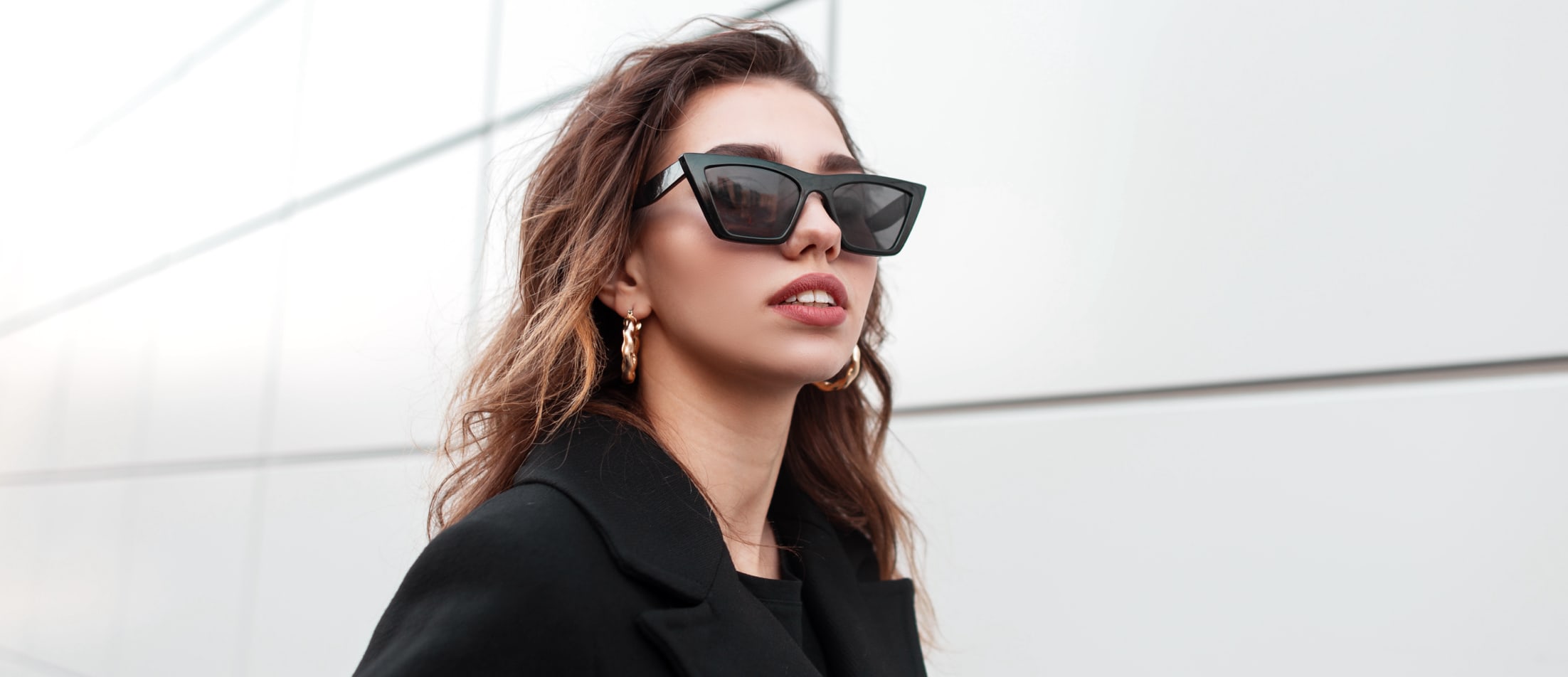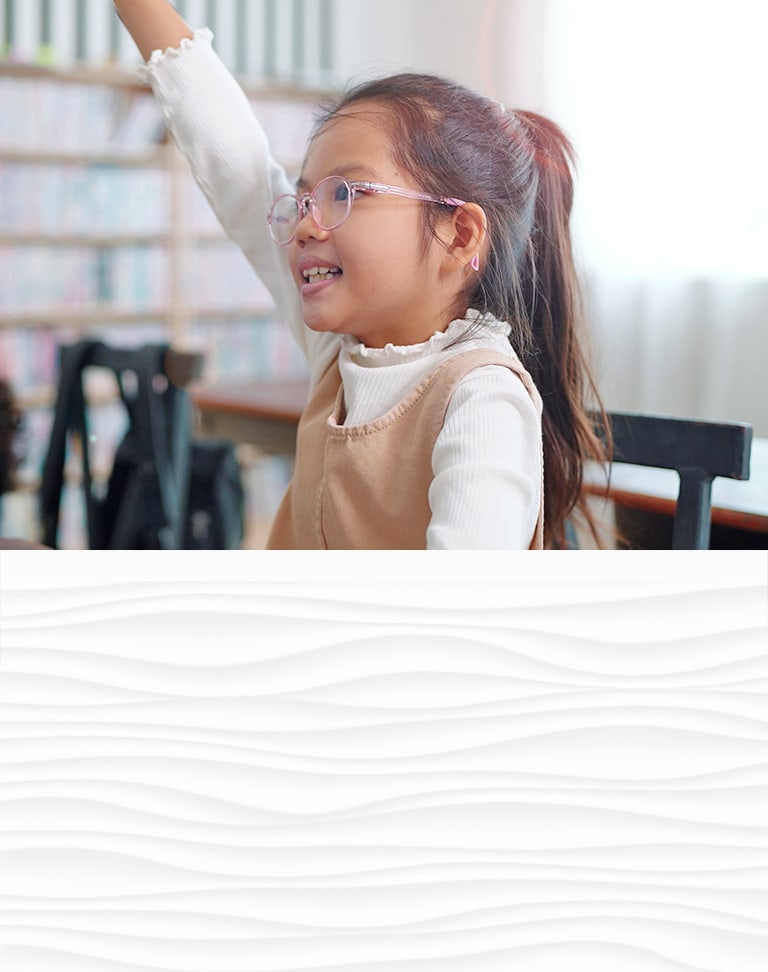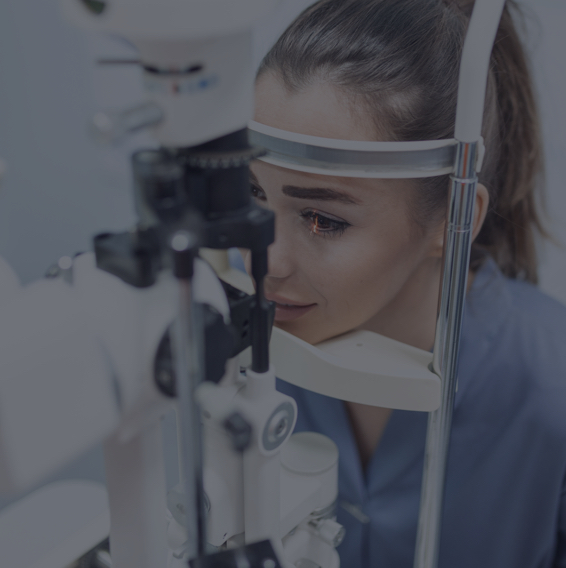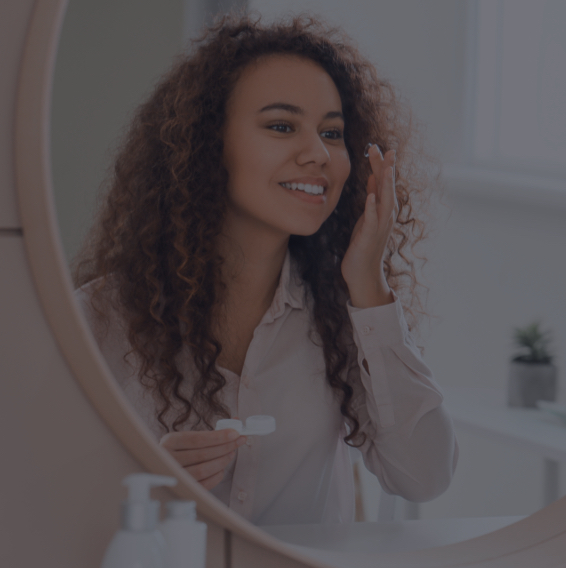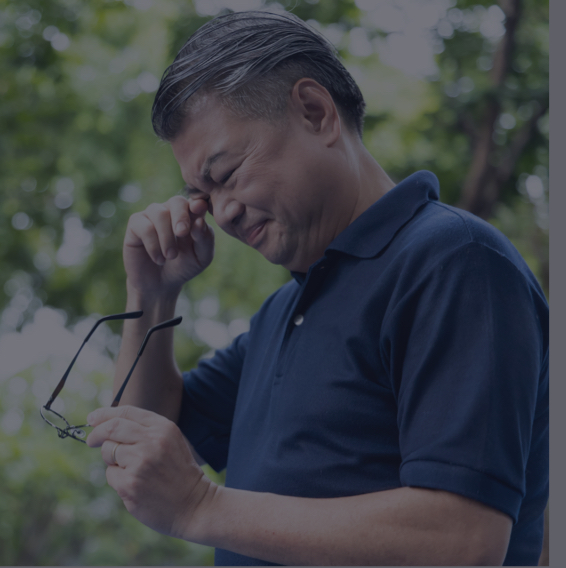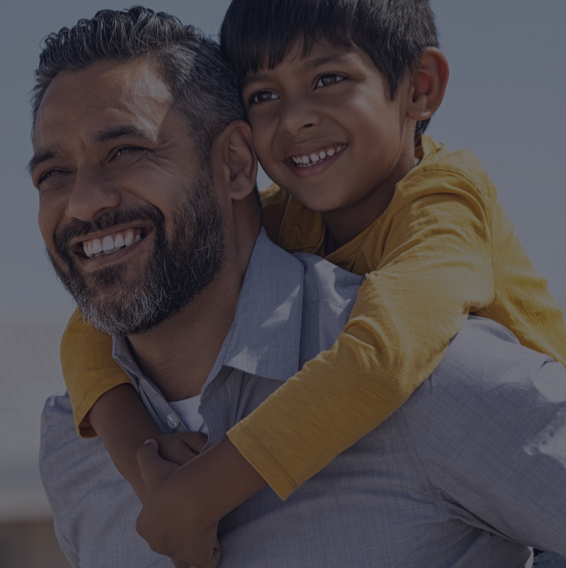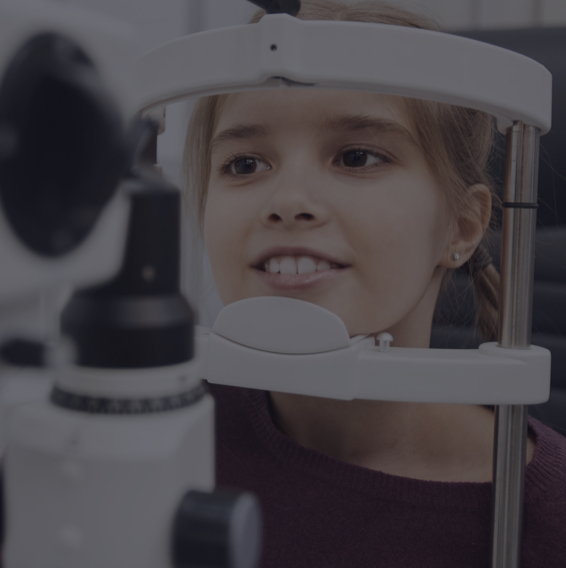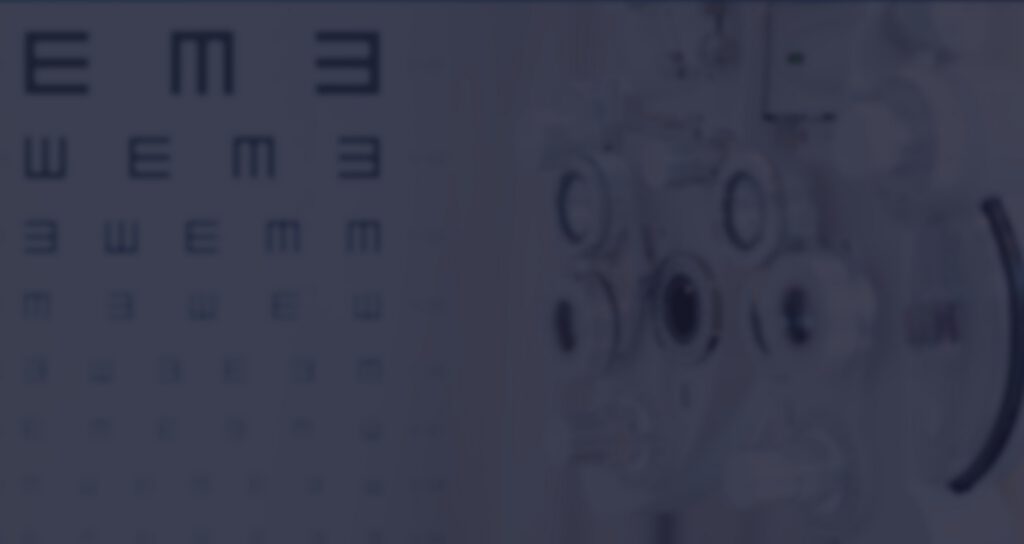Helping Young Eyes Grow Strong
Your child has so many new experiences early in life. From the second they are born, they are continually taking in new signals and information, figuring out what to make of everything they hear, touch, and see.
From their first months of life through their school years, we’re here to support your child’s visual development with age-appropriate, compassionate care. Our children’s eye exams are comfortable, kid-friendly, and designed to catch any potential issues early.
Early detection can make all the difference with issues like myopia and hyperopia (farsightedness), especially when it comes to learning and development. Contact us to book your child’s eye exam today and give them the clear, healthy start they deserve.

The Early Stages of Childhood Vision
Your baby’s vision starts developing the moment they open their eyes. In those first 3–4 months, their eyesight is limited to just a few centimetres in front of them, but that quickly changes. As they grow, they begin to see further, recognize colours, develop depth perception, and improve hand-eye coordination.
But just like every other stage of development, vision can come with its own challenges. That’s why regular eye exams are so important. By checking your child’s eyes early and often, we can detect potential issues and support healthy visual growth every step of the way.

When Should Kids Have Eye Exams?
Our team can help you find the right exam schedule for your child.
The First Exam (6–9 months)
For the first few months of your baby’s life, they are slowly developing their visual skills. Even if your baby seems to be seeing well, we recommend a first eye exam between 6 and 9 months of age. At this stage, we’re looking for signs of conditions like amblyopia (lazy eye) or strabismus (eye turn).
This is why the Canadian Association of Optometrists (CAO) recommends bringing your child in for their first eye exam between the ages of 6 and 9 months.
The Second Exam (2.5–3 years)
Following their first exam, a couple of years may pass before their next appointment, while your child’s eyes develop further, provided that your optometrist deems it healthy to do so.
This period allows your child to develop their visual skills and let them start using their eyes for things like playing and navigation. Between the ages of 2.5 and 3, the CAO recommends bringing your child in for their second eye exam.
After starting school, your child should be attending eye exams every year.
Annual Exams (3+ years)
Once your child enters school, annual eye exams are the best way to monitor their prescription and screen for any developing issues, such as myopia, hyperopia, or eye strain from screen use.
What to Expect During Your Child’s Eye Exam
We do our best to make exams stress-free and fun. Here’s how it works:
- Health history and chat: We’ll start with a conversation about your child’s health and any family eye conditions. This helps us understand what to look for.
- Vision testing: We check how well your child sees at different distances and evaluate eye coordination and visual development.
- Eye health evaluation: We use gentle, child-friendly technology to look for signs of eye disease or structural issues.
- Vision correction (if needed): If your child needs glasses or contact lenses, our team will guide you through your options and help your child find a great fit they’ll love wearing.
We also provide tips on lens care and how to keep their glasses or contacts clean and comfortable.
Eye Conditions to Watch For
Some of the most common childhood eye conditions include:
- Amblyopia (lazy eye)
- Strabismus (eye turn)
- Myopia (nearsightedness)
- Hyperopia (farsightedness)
- Colour vision deficiency
Untreated, these can affect academic performance, sports, and social confidence. That’s why early detection is key.
Managing Myopia
Early
Myopia (nearsightedness) is becoming increasingly common in kids. If your child is struggling to see distant objects clearly, we offer a variety of control methods to help slow the progression, including MiSight 1 day and Abiliti 1-Day contact lenses, myopia control glasses, ortho-k contact lenses, and atropine drops.
Learn more about how we can help you and your child navigate myopia with our myopia control services.

How to Spot Vision Issues in Kids
Look out for these signs that your child may need an eye exam:
- Frequent squinting or headaches
- Sitting too close to the TV or holding books very close
- Tilting or turning the head to see better
- Covering one eye while reading
- Difficulty tracking lines or losing their place
- Using a finger to follow along when reading
If you’ve noticed any of these behaviours, it’s time to schedule a visit. Contact us to book your child’s next eye exam today and see how we make a difference in children’s eye care.
Check Out Our Google Reviews
I went there today to get some new glasses. There was no wait, as I was seen at 2:55, even though my appointment was for 3:00! The staff were exceptionally nice and the optometrist I saw was extremely pleasant and knowledgeable. The location is beautiful and they have a great selection of glasses frames. I was very impressed with my visit.
Andy T
It’s always great! Love the doctor and all the people that work there! Very patient and helpful.
Noemia F
Staff are great there! It’s a bustling place, but they’re well organized and always have a smile and positive customer service. Optometrists are very knowledgeable and helpful.
Alexandra P
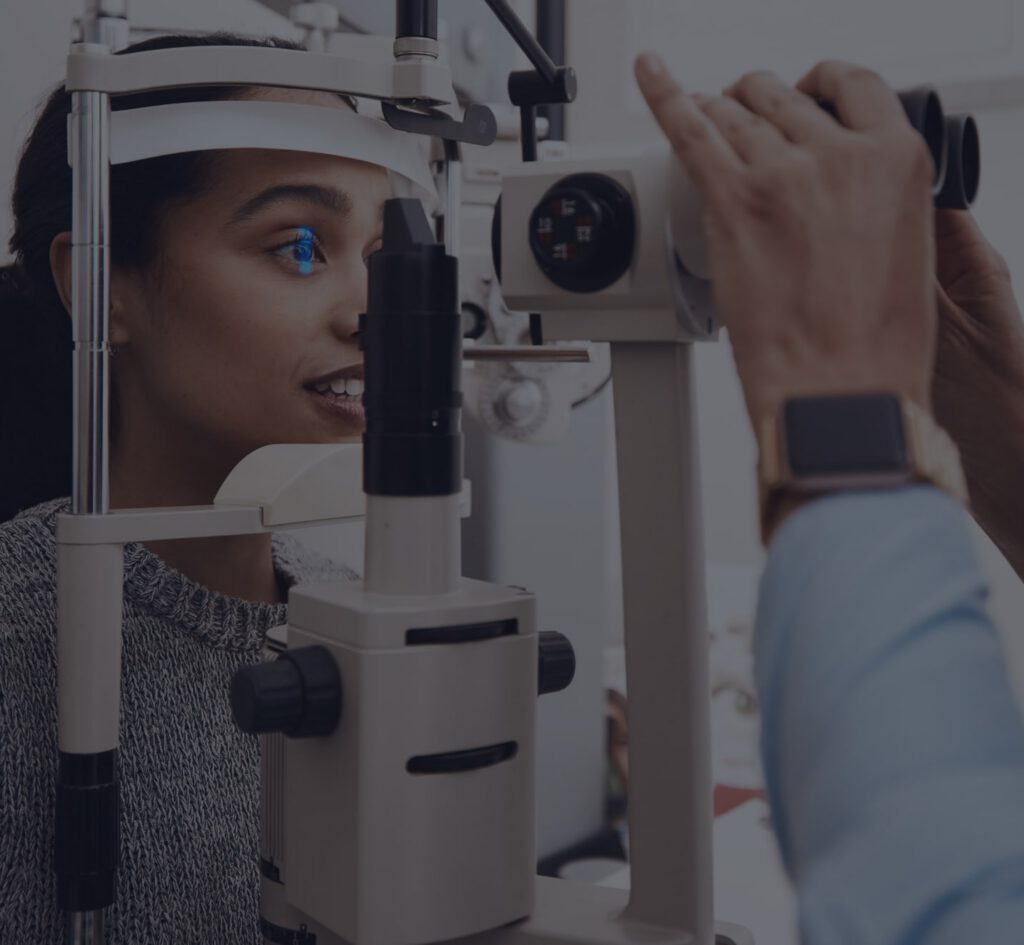
Where to find us
You can easily find our office at the Canamera Medical Centre, located South of Cambridge Centre Zehrs. We have free parking, with convenient accessible parking right in front of our office. Visit us today!

Address
- 350 Conestoga Blvd, Unit C3
- Cambridge, ON N1R 7L7
Contact
- Phone: (519) 624-2020
- Email: info@cambridgeeyecare.com
Hours of Operation
Brands We Carry
